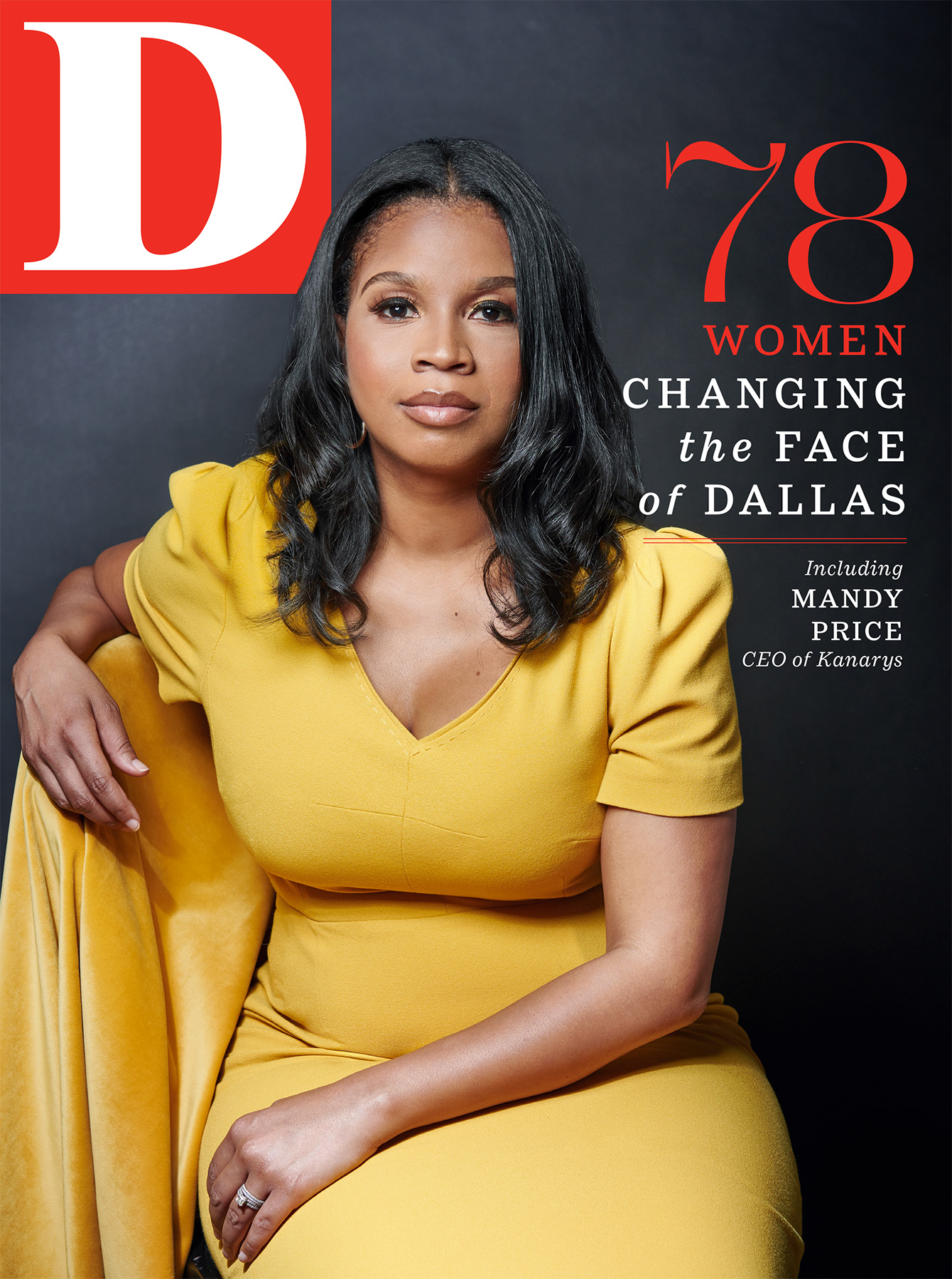The republishing this month of my 1987 book about race in Dallas, The Accommodation, is an anomalous event in the world of book publishing. Digging up a local history book that sold a modest number of copies a third of a century ago and giving it a second chance just isn’t something people do. And it wasn’t my idea.
But I wish it had been. Bringing the book back to life now like a literary Rip Van Winkle was the inspiration of Will Evans, founder and owner of Deep Vellum Publishing and Deep Vellum Books in Dallas. Evans envisions an entire series of books to explore national issues but on a hyper-local basis. His idea is consonant with my own long career as a local reporter.
My experience has been that every city, every village, every country crossroads is unique, with its own social fingerprint, because people are unique. If we understand our lives only as local instances of national narratives, then we miss ourselves in the saga. Our truths are unique—and so are our lies.
In the mid-1980s, working on The Accommodation, I was exploring a specific local lie. To anyone who would listen, Dallas insisted that it had “no reason for being” and almost no history worth mentioning. A 1985 political flyer urging voters to support a bond issue started out, “There is no real reason for a place called DALLAS. No harbor drew people here, no oceans, no mountains, no great natural beauty.” From there, the story went on that the city exists solely as a testament to salesmanship. That might sound like harmless Chamber of Commerce blah-blah, and certainly Dallas has always had a lot of huckster in its character. But when I heard that story, I also heard a willful effort to cover up the bad stuff.
Since I wrote my book, a number of serious (real) historians have taken on that very idea and have found two things. One, it’s not true. Dallas had all the same reasons for getting started—trade, transportation, migration—that gave birth to all of the new American cities of the 19th century.
But more important, the no-reason-for-being origin myth is the White man’s version, blotting out a long, ugly record of oppression inflicted on citizens of color. I’ve always felt that blotting out the city’s racial history was a big part of the no-history myth. And Dallas, as I found, had a lot of racial history to blot.
Dallas in the 1950s saw a wave of bombings of homes of middle-class Black families, organized by White churches. All of that was in the newspapers of the time, confirmed by a grand jury investigation at the time, confirmed again later when I interviewed the late Henry Wade, who had been the Dallas County district attorney during the grand jury investigation of the bombings 30 years earlier.
We can argue about whether Dallas was any worse than other American cities. But maybe the more important comparison is between Dallas in the early 1980s and Dallas today. Four things in that comparison seem striking. The first is how much has changed for the better, especially in our brand-new suburban penumbra. Both north and south, the suburban landscape flourishes with a racial and ethnic diversity that would have been unthinkable in Dallas 30 years ago.
The second comparison between Dallas 30 years ago and Dallas today is how little has changed in the southern Dallas neighborhoods most afflicted by extreme poverty, unemployment, crime, drugs, and incarceration. The numbers are especially cruel if you share my belief that all babies are born as miracles, but babies don’t get to decide where they are born.
According to research by the Dallas Independent School District, children born today to the city’s most blighted neighborhoods can expect to earn in their entire lives only 20 percent of what children born outside those precincts will earn. They can expect to complete college at one-fourth the rate of other children. All of the other statistics, from incarceration to life expectancy, fall within those same grim parameters.
These numbers were presented to the School Board last year, along with a shocking comparison. The map of extreme poverty in the city today was superimposed on a 1937 “redlining” map created by a now-defunct federal agency that had the power to tell banks where they could make home loans. The redline map ruled out loans in Black majority neighborhoods in southern Dallas, no matter what a loan applicant’s creditworthiness might have been. The two maps, the 1937 redline map and today’s map of extreme poverty in southern Dallas, were almost the same map.
National research published by the Census Bureau’s Maggie Jones and Sonya Porter, Raj Chetty at Stanford, and Nathaniel Hendren at Harvard shows that people of color who achieve economic success, especially Black men, still do so in a larger context of racial inequality. Black Americans who are successful are consistently less successful than Whites and have a much higher tendency to slide back down the scale, almost as if sailing against an anchor.
If we pull the focus back down to the local level, what is the anchor? Where is it? Can we see it with our own eyes?
Yes. It’s in the maps. It’s in Jim Crow and Reconstruction and the KKK. It’s in the history of the bombings in South Dallas. It’s in the recent research published by Dallas County District Attorney John Creuzot showing wildly disparate ways in which drug laws are enforced in North and South Dallas.
The success is Black. The anchor is White. Ever since those loan maps were drawn up, ever since the bombs exploded, every time a Black kid gets pulled over on a “pretext stop” in southern Dallas, some parts of southern Dallas still operate as a machinery set up and designed by White people to hinder, maim, and extinguish Black lives. The machine still does the job for which it was designed.
I promised two more comparisons between the time when The Accommodation was first published and this time. In 1986, this book literally was pulled off the presses the day it was to be printed, after Dallas business leaders caught wind of what it would say. The New York Times reported on how my Dallas publisher abandoned the book. A publisher in New Jersey brought it out the following year.
Compare that with today. Will Evans hunted down me and Dallas County Commissioner John Wiley Price, because we shared the rights (long story), and talked us into this rebirth of the book in Dallas by a Dallas publisher. That alone tells me everything I need to know about the difference between Dallas 34 years ago and Dallas today.
Truth is told now. Courageous things are being tried. The school district is experimenting with an entirely new approach to discipline designed to keep kids in school instead of shipping them off to prison. Under the leadership of past president Miguel Solis, the School Board radically altered the most recent bond program to set aside money specifically aimed at redressing past inequity.
The Dallas County district attorney is working wherever possible to steer small-time offenders toward productive citizenship by using rehabilitation instead of incarceration. Since the George Floyd murder, business leaders like former Trammell Crow Company chairman Don Williams and others have spoken forcefully about the need for real change, not just talk.
There were some big holes in my book, by the way, and one was my failure to focus on the role of Mexican Americans, now the city’s largest demographic group. Solis’ achievements on the School Board and elsewhere illustrate how Hispanics in the city now are becoming a kind of solvent to help Whites and Blacks get past the most insoluble of our differences.
But some things in my book were right then and sadly still are. We’re still stuck with a system of legal corruption at City Hall. I’m not talking about the sorry saga of council members serially carted off to prison for taking bribes but about the bigger and more powerful scheme I wrote about in the book, the one that isn’t illegal. I speak of the accommodation between the old White oligarchy and certain elected southern Dallas leadership. It’s a marriage made not in heaven, used to foist off on the city every obsolete, old-school, bad idea in the book, from building one bad highway along the river to refusing to tear down another between downtown and Deep Ellum.
That accommodation is still on the books.
Some things are missing from my book because they hadn’t happened yet. The influx of international immigrants into the region has happened since the book was published. The entire social algorithm must be recalibrated to accommodate people whose roots and experiences are outside the American ethnic formula—one of many reasons we need a new book written by somebody who doesn’t look like me.
Speaking of which, I said four things have changed. I’m so relieved Evans didn’t put my 1986 author photo on the back of the new book. I’m tired of people coming up to me, asking me if I’m Jim Schutze, and then saying, “Good God, man, what happened?”
Write to [email protected]. This story originally appeared in the September issue of D Magazine with the title, “Lethal Weapon 2.”
Author








